Chimney Crown Repairs: Stop a Small Crack From Becoming a Big Problem
Water Damage, Mold and Fire Hazards…Could your Chimney Crown Be To Blame?
Keeping your chimney, and especially your chimney crown, in good repair is an important step in keeping your family safe. Chimneys that aren’t kept in good working order can cause fires, wood structures to rot, and carbon monoxide to back up into your home, just to name a few issues.
Important! Each chimney and roof may have special circumstances. A yearly inspection by a chimney sweep is an important step to diagnosing problems early and avoiding costly repairs. Whether or not you decide to diagnose a problem and fix yourself is a personal matter. We always recommend getting a professional opinion first.
To help you decide how best to proceed with your chimney crown repairs, in this article we’ll cover the basics of common chimney crown problems and repairs.
What Is a Chimney Crown and Where Is It Located?
The chimney crown is generally a sloped slab of concrete which creates a drip edge that keeps water from eroding the flue directly beneath it. It’s located near the very top of the chimney.
It is not to be confused with a chimney cap which is designed to keep rain, snow, animals or other debris from entering the flue from the wide opening at the top.
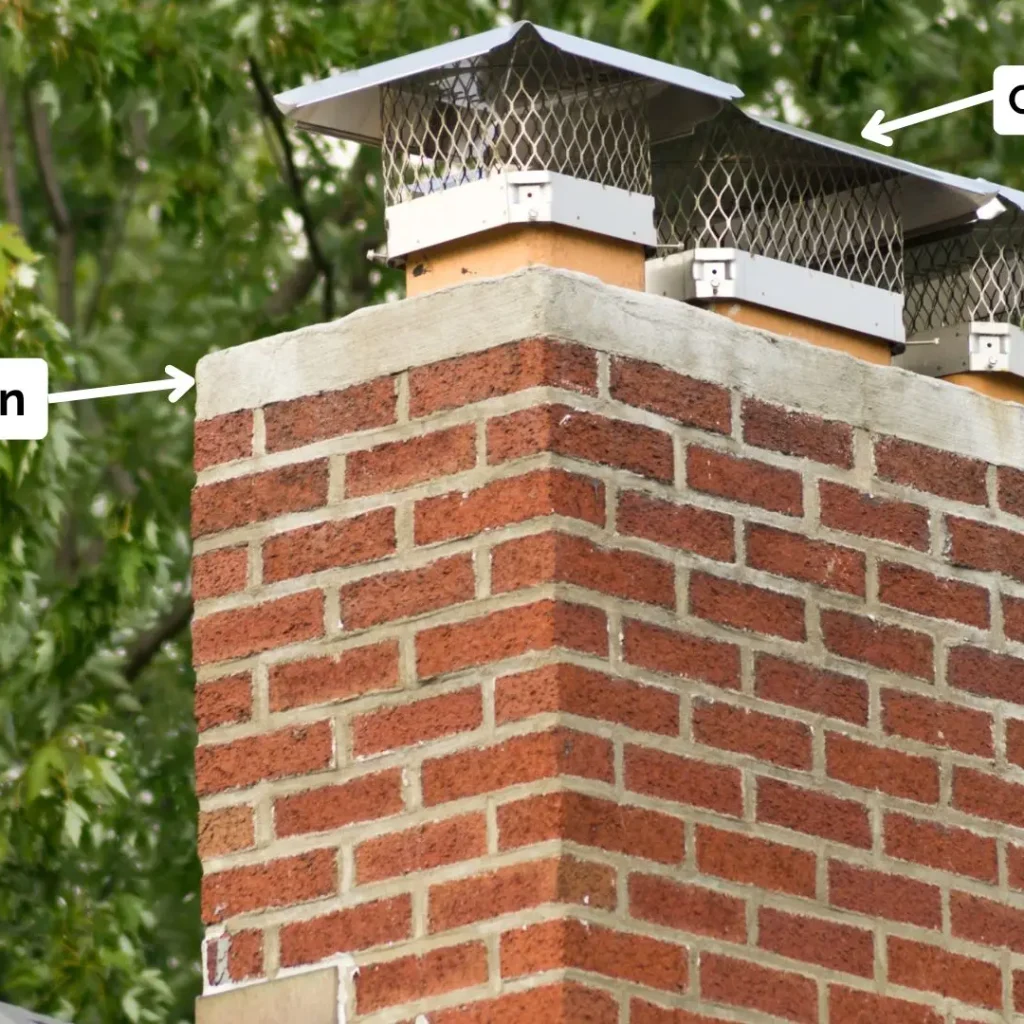
While masonry chimneys like those made of brick appear indestructible, the weather takes a toll. Freezing and thawing as well as any type of precipitation can slowly erode a masonry chimney. The chimney crown is designed to protect the flue from such abuse.
Prefabricated fireplaces and chimneys are a little different and use different means to protect the chimney from wear and tear which can include a decorative chimney chase made of metal.
Both fireplace set-ups, whether pre-fabricated or masonry, need routine cleanings and checks to make sure they’re in good working order.
Types of Chimney Crowns
Masonry chimneys usually feature a chimney crown made of concrete, but the crown can also be made of brick and stone. They’re all designed to seal the chimney and prevent water from getting to the flue.
Stone is usually the most durable material for chimneys and chimney crowns but the mortar joints are still susceptible to decay over time. That’s one of the reasons all chimney crowns should be inspected annually.
Common Chimney Crown Problems
Here are some of the most common chimney crown problems and what you can do about them.
Extensive Cracks and Chips
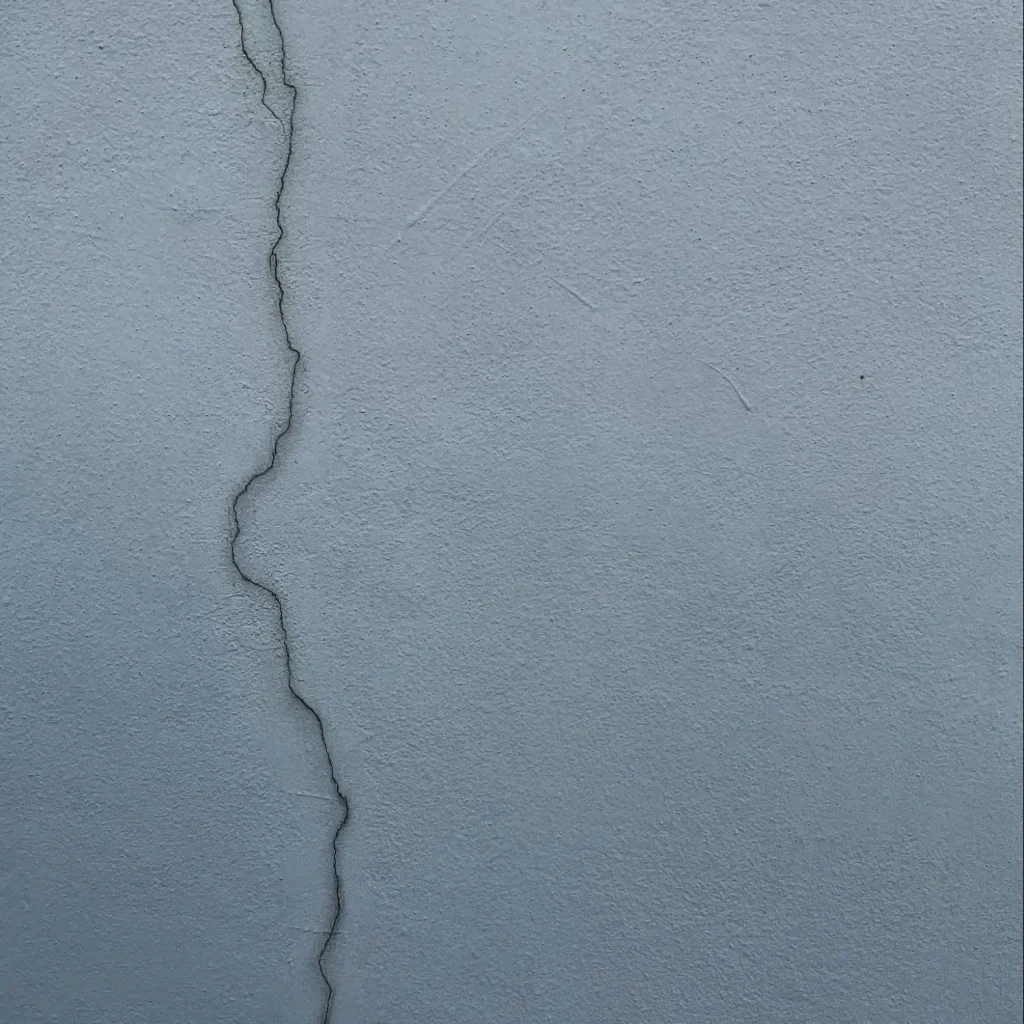
Extensive chimney crown cracks or chips can occur for several reasons.
- Houses naturally settle with time and this can cause cracks in different areas of a masonry fireplace including the crown.
- If you live in an area with extreme temperature changes, the constant expansion and contraction of porous materials like concrete can cause cracks to appear with time. Water can also erode masonry joints with time.
- On rare occasions, the crown was built incorrectly in the first place with inferior materials or workmanship.
Possible chimney crown repair needed: Sealing, resurfacing or tuckpointing may be necessary. This depends on the size of the cracks, their location as well as the material they’re made of. Tuckpointing is reserved for brick or stone chimney crowns and involves removing and replacing crumbling or missing mortar in the joints.
Resurfacing is a technique used on concrete chimney crowns. It involves sealing any existing cracks and then spreading a thin mortar mix over the top. Depending on the seriousness of the cracks or chips, you may need to replace the entire crown.
Urgency: Cracks and large chips should be repaired as soon as possible. Any water seepage can cause a host of complications and if left go, will be more costly to repair later.
Can I DIY this chimney crown repair?: This depends on many factors. If you have the masonry knowledge to know what type of products you’ll need and how to mix and apply them, you may be able to DIY it. Something else to consider is how you feel about heights and the pitch of your roof. Many people don’t have the correct safety equipment to do this job or they simply don’t feel safe working from heights.
Minor Chips and Hairline Fractures
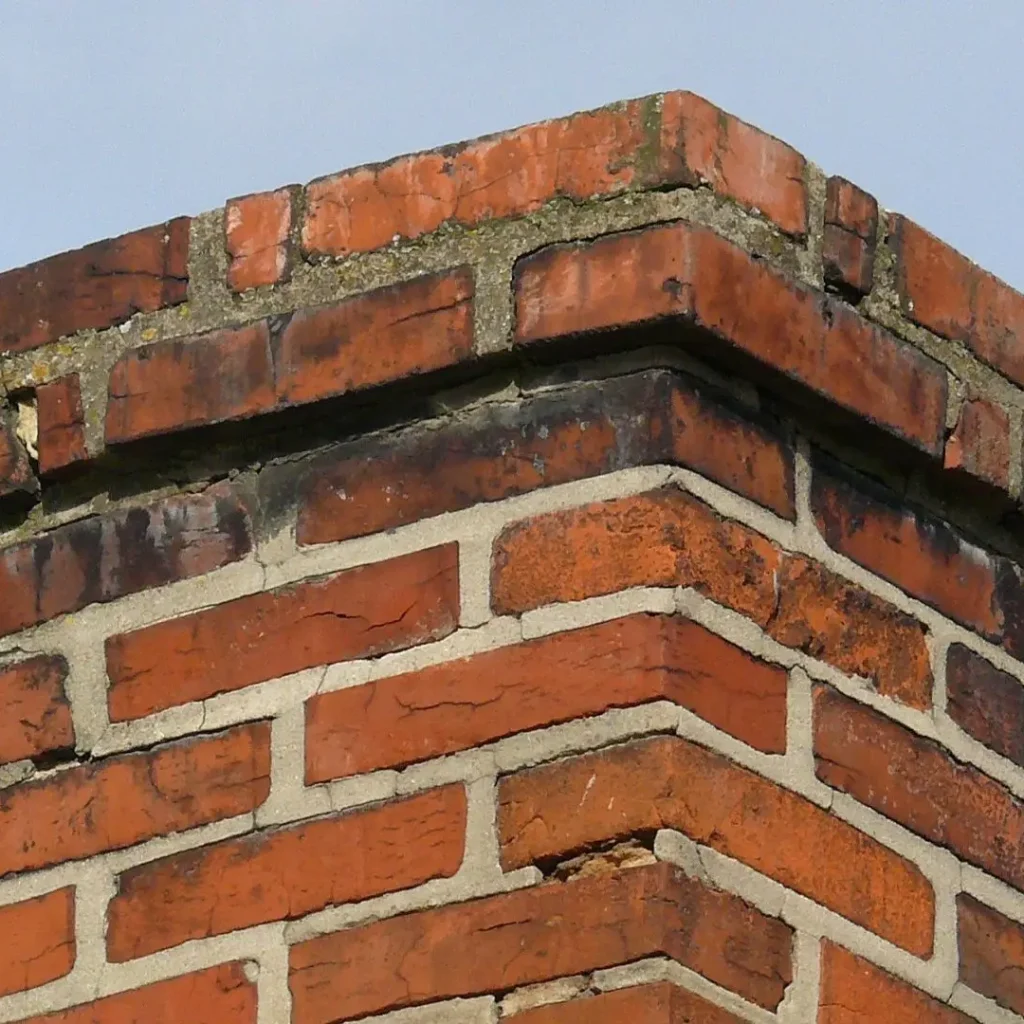
Hairline fractures and minor chips can occur over time and are signs of normal wear and tear.
Possible chimney crown repair needed: Resurfacing is a good option that can address these minor issues and strengthen your chimney crown for more years to come.
Urgency: Cracks and chips should always be taken seriously. As temperatures fluctuate they can quickly grow in size if you ignore them.
Can I DIY this chimney crown repair? This repair or maintenance procedure does require some skill and knowledge of masonry procedures. If you don’t have that knowledge or don’t have the proper safety equipment to carry out the repair it would be better to call a professional.
At A&X Masonry we’re happy to help. If you’re in the Dallas, TX area, fill out the form below to request a free estimate.
Moss Build-Up
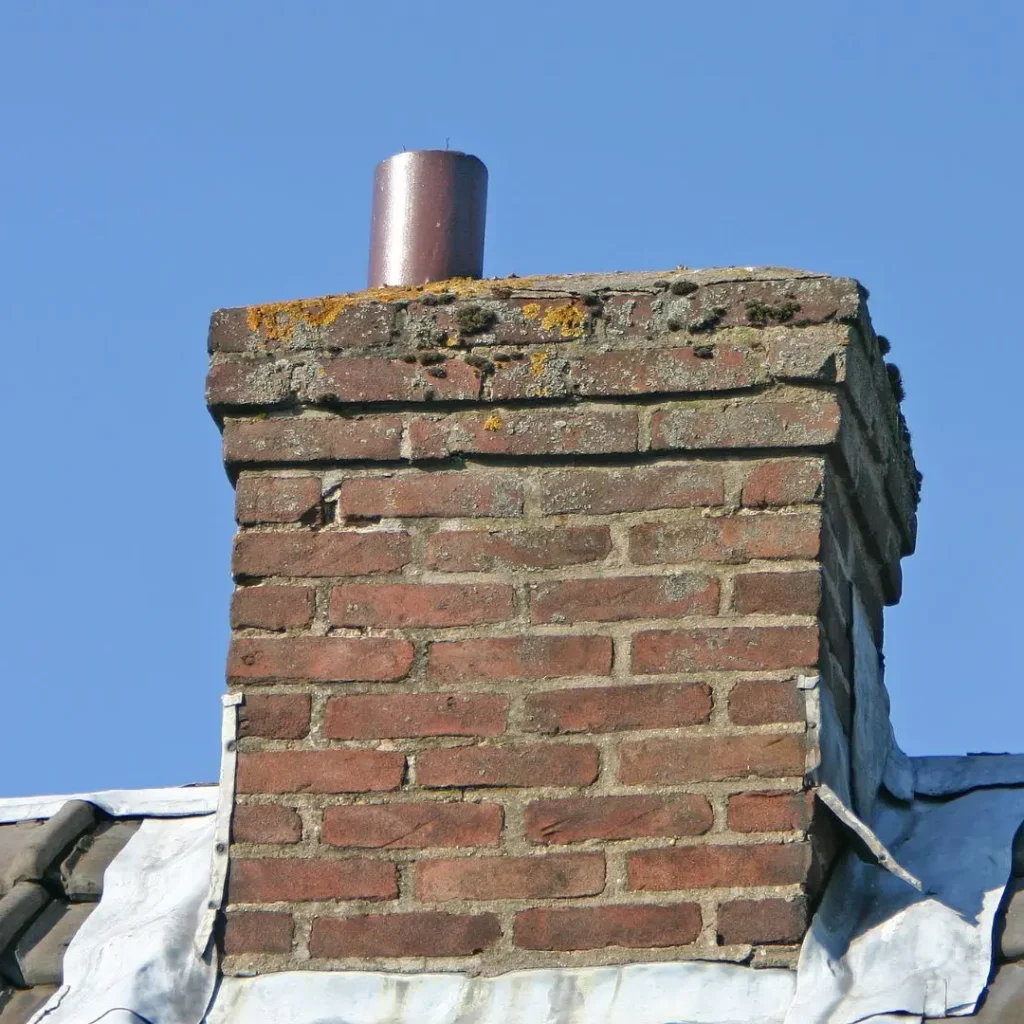
Moss build-up, while it seems inoffensive, can be detrimental to a chimney crown. Water is one of concrete’s biggest enemies. Moss is a natural sponge that will hold onto rainwater and will allow the water to sit on the crown instead of running off. It can also inhibit the functionality of the crown by causing water to pool on top of it.
Possible chimney crown repair needed: Anytime water sits on the crown it can cause big problems. This one has an easy solution. The basic steps involve removing the moss, treating the surface with a moss and algae inhibitor and then applying a sealer.
Urgency: This is better done sooner than later. Like most issues, the sooner it’s caught the less trouble and expense it is to fix.
Can I DIY this chimney crown repair?: You may be able to DIY this, but you need to buy the right products and apply them correctly. Working on roofs is also very dangerous. If you don’t have the right safety equipment it’s best to leave it to a professional.
Debris Build-Up

Removing debris iis an important part of caring for the chimney crown. After chimney crowns have been inspected, birds can nest and storms can leave debris that can trap moisture. This will speed up the decay of your chimney crown.
Possible chimney crown repair needed: Removing the debris as quickly as possible is the first step to preserving your chimney crown. Once debris is removed you should check for cracks or damage. If you’ve discovered small cracks in the process, getting them fixed right away will be cheaper than waiting until they get bigger later.
Urgency: Removing debris should be done as soon as possible.
Can I DIY this chimney crown repair? We have the same advice as we did for the moss build-up. Some homeowners feel comfortable removing the debris but aren’t sure what to do if they discover cracks while doing so. For added confidence, it never hurts to have a professional take a look at it.
At AX Masonry, our estimates are free. Contact us below, if you live in the Dallas-Ft.Worth area and have a chimney crown that should be checked.
Severely Damaged
If the chimney crown has been severely damaged, such as by a falling tree, or if decades of neglect have caused major damage, then a complete rebuild might be needed.
Rebuilding your chimney crown is an extensive repair. This is usually necessary when you can see that large chunks are missing or widespread cracking and erosion are taking place.
Possible chimney crown repair needed: Removing the old crown and replacing it with a new crown can be complicated. While removing the old crown, at times we discover additional problems like rotting adjacent beams or damage to the flue or the flue lining.
Urgency: This should be done as soon as possible. The integrity of your entire fireplace could be at stake.
Can I DIY this chimney crown repair? This repair requires extensive masonry knowledge and skill. This type of repair is often best left to a professional mason who can guarantee the integrity and safety of your repair.
How To Protect Your Chimney Crown From Future Damage
All chimney crowns should be inspected yearly by a professional. And you as the homeowner should keep an eye on it throughout the year. Things like storms and animal activity can unexpectedly become a problem any time of the year. Mold and moss build-up can also occur in a relatively short period of time.
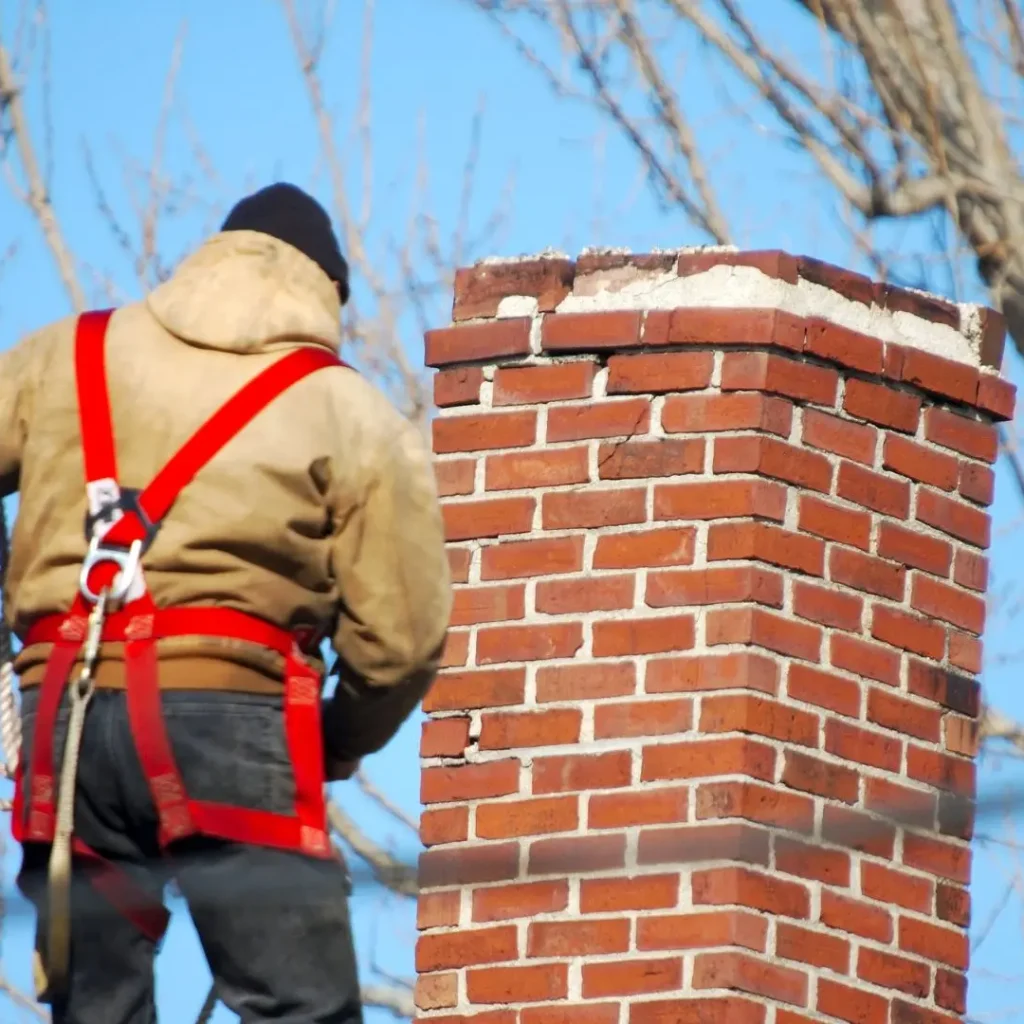
If you do have repairs done, make sure they are done with quality in mind. Periodically resurfacing your chimney crown can also be a planned part of your home maintenance. Your chimney crown is not the place to try to save money by using inferior products or taking shortcuts.
Chimney Crowns: A Small but Important Part of Your Chimney
The chimney crown is the unsung hero of chimneys everywhere. It’s often barely noticeable, no one remarks on how beautiful it is but without it, you can’t enjoy those warm cozy fires with your family.
Don’t underestimate the damage that can result from postponing a yearly maintenance inspection. Be quick to make minor repairs and avoid costlier headaches later.
If you are unsure of the condition of your chimney crown and live in the Dallas-Ft.Worth area, contact us today at AX Masonry and we’d be happy to inspect it and give you a free estimate on any repairs. We’re experts when it comes to all things masonry including tuckpointing and chimney repair.
FAQ’s
Are chimney crown repairs expensive?
Chimney crown repairs aren’t necessarily expensive. It all depends on the extent of the damage. A good maintenance program will help you avoid expensive repairs.
Are chimney crown repairs labor-intensive?
Chimney crown repairs can be labor intensive especially if the problem has been left go for some time. The more deteriorated the crown, the more steps are needed to fix it.
How to assess if your chimney crown has issues?
Call a professional and schedule yearly inspections. If problems are serious enough, large chunks that are missing from the crown can often be seen from the ground. If you have water damage in your attic near the chimney this can also be a sign that the crown is damaged.
Is it dangerous to wait to repair my chimney crown?
Yes, it can be very dangerous to wait. Water seepage that comes as a result of a damaged or missing chimney crown can erode parts of a functioning fireplace making it unsafe to light as well as causing water damage in other areas of your home.
Is a chimney crown really necessary?
Yes, the chimney crown is an essential part of a masonry chimney. It is sloped to direct water away from the chimney itself, preserving the overall structure.
